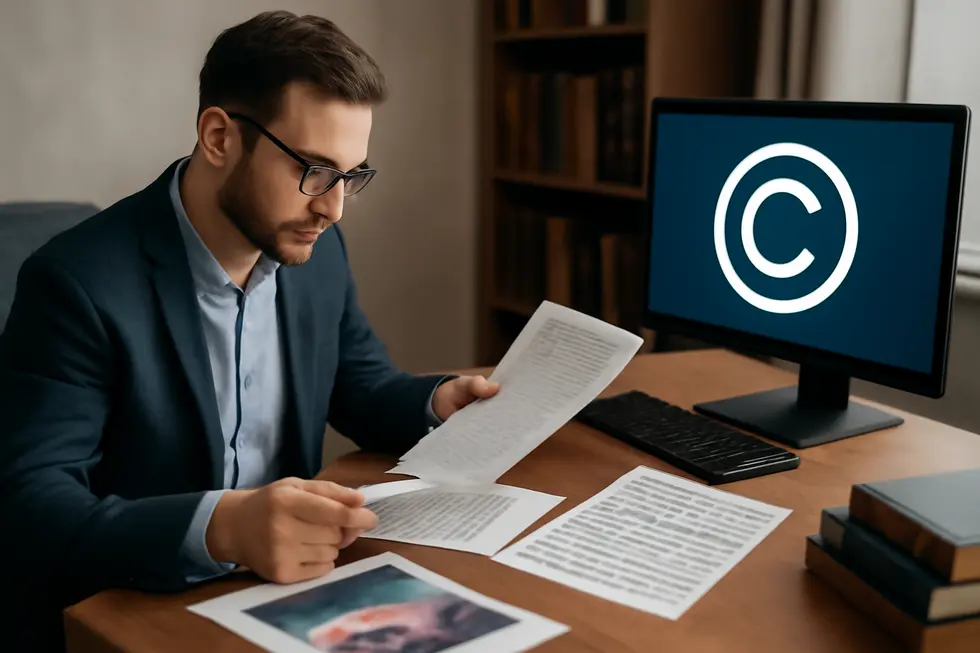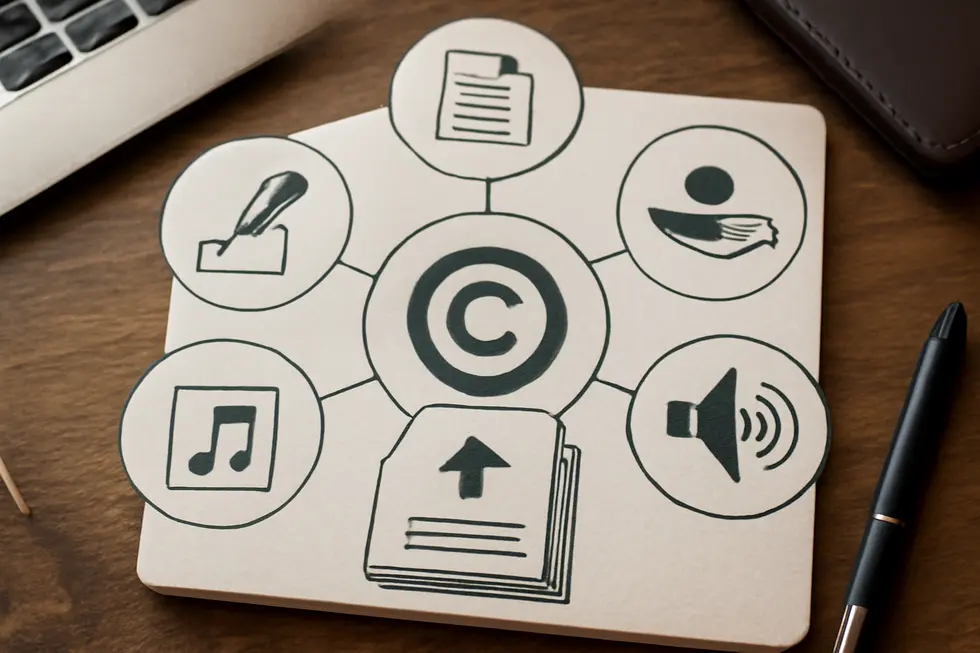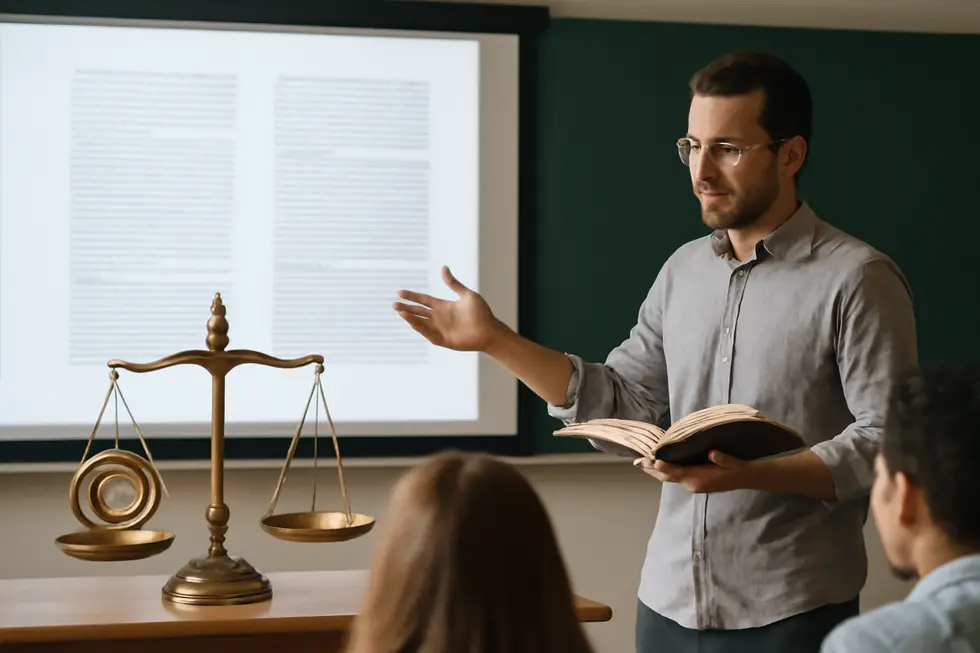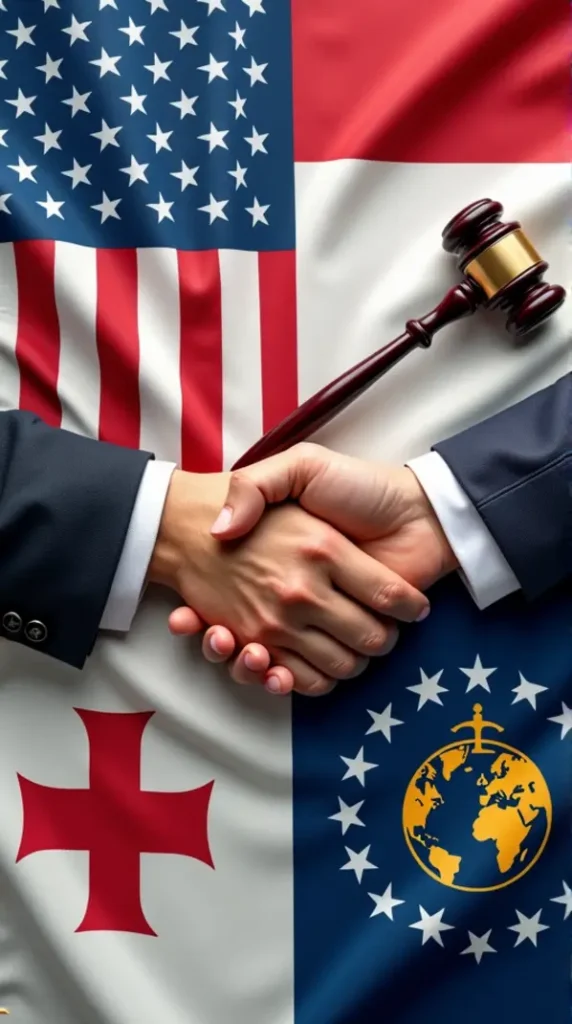Introduction
For business owners, understanding copyright law is vital to protecting creative assets and avoiding legal pitfalls. Copyright grants exclusive rights to original works fixed in a tangible form, automatically securing creations without complicated registration processes. This guide unpacks the fundamentals, showing how copyright works, the specific protections it provides, and the important limitations that allow fair use. Each chapter builds a clear picture to help business owners confidently navigate copyright issues and leverage these protections to support growth and innovation.
Tables of Contents
Chapter 1: Fundamental Principles of the Basics of Copyright Law
- How Originality and Fixation Establish Copyright Protection
- Balancing Control and Access: Exclusive Rights and Their Built-In Limitations in Copyright Law
- Navigating the Territorial Limits and Global Frameworks of Copyright Protection
Chapter 2: Key Rights and Protections in the Basics of Copyright Law
- Understanding the Scope and Boundaries of Exclusive Copyright Rights
- Balancing Creator Rights and Public Access: The Economic and Social Foundations of Copyright
- Navigating Technological Advances and Global Challenges in Copyright Protections
Chapter 3: Navigating the Boundaries: Limitations and Exceptions in the Basics of Copyright Law
- Understanding Fair Use: Balancing Creator Rights and Public Interest in Copyright Limitations
- Educational Use in Copyright: Fair Use and the TEACH Act’s Role in Classrooms
- Navigating Library and Archive Exceptions: Balancing Access and Ownership in Copyright Law
Chapter 1: Fundamental Principles of the Basics of Copyright Law

1. How Originality and Fixation Establish Copyright Protection
Originality and fixation form the backbone of what copyright law protects. For a work to qualify, it must be independently created by an author with at least a minimal degree of creativity. This does not mean the work needs to be novel or unique, but it must reflect some personal expression instead of just facts, ideas, or purely functional elements. Even a small amount of creative input—sometimes called “small coin”—can be enough to meet this threshold. For instance, an artistic arrangement of everyday objects can be copyrightable if it conveys some creative expression. Equally essential is fixation, which requires that the work be captured in a tangible medium durable enough to be perceived and reproduced. Spoken words or improvised performances without recording or transcription lack this permanence and thus are not protected. This tangible form ensures that copyright does not cover ephemeral or abstract ideas but concrete expressions fixed in a stable medium. Together, originality ensures the work is a genuine intellectual creation, while fixation guarantees its form can be objectively identified and shared. These principles delineate protectable works from unprotected concepts, laying the foundation for the rights creators can hold. For more in-depth information on copyright basics, see the University of San Francisco’s copyright guide.
2. Balancing Control and Access: Exclusive Rights and Their Built-In Limitations in Copyright Law
Copyright law grants creators exclusive rights to control their original works once fixed in a tangible form. These rights include reproducing the work, creating adaptations, distributing copies through sale or lending, publicly performing or displaying it, and in some cases, transmitting digital audio performances. Such exclusivity lets authors monetize their creations, license others, or prevent unauthorized usage, thus incentivizing creativity and innovation.
However, these rights are not absolute. The law carefully balances authors’ control with public interest by imposing vital limitations. For example, copyright does not protect ideas, facts, or methods—only their unique expression. The fair use doctrine offers crucial flexibility, allowing uses like criticism, teaching, and research without permission to foster free expression and knowledge dissemination. Additionally, specific statutory exceptions enable educators and libraries to utilize works within prescribed limits.
Licensing nuances further shape this balance, distinguishing exclusive licenses that restrict others—including the author—from non-exclusive licenses that permit wider sharing. Ultimately, these intertwined rights and limits reflect copyright’s dual mission: protecting creators’ interests while ensuring society benefits through access and reasonable use. For detailed legal grounding on these principles, see Section 106 of the U.S. Copyright Act.
Discover more about the fundamental rights and restrictions that define copyright in our guide on 6 exclusive rights of copyright.
3. Navigating the Territorial Limits and Global Frameworks of Copyright Protection
Copyright law fundamentally operates within the principle of territoriality, which means a work’s copyright protection is confined to the country where those rights are granted and enforced. Each nation establishes its own copyright statutes, making protections effective only within its borders. Rights secured domestically do not automatically transfer internationally, reflecting a respect for national sovereignty over intellectual property. However, international cooperation is fostered through treaties like the Berne Convention and the TRIPS Agreement, which set minimum standards and facilitate cross-border recognition and enforcement of copyrights. These agreements do not create a universal copyright but ensure member states uphold consistent baseline protections, reducing legal uncertainty for creators and users worldwide. In practice, this means copyright holders must often navigate a complex patchwork of national laws when securing rights abroad or resolving infringements internationally. Licensing agreements must explicitly specify territorial scope to accommodate these jurisdictional differences effectively. Although treaties encourage global harmony in copyright protection, enforcement remains challenging due to varied legal interpretations and procedural approaches among countries. This delicate balance affirms that while copyright’s foundation lies in territorial limits, international frameworks are essential for meaningful global cooperation. For further insight into the six exclusive rights copyright grants, see this resource on exclusive rights in copyright law. More detailed treaty information can be found through the University of San Francisco’s copyright guide.
Chapter 2: Key Rights and Protections in the Basics of Copyright Law

1. Understanding the Scope and Boundaries of Exclusive Copyright Rights
Copyright law grants creators a bundle of exclusive rights over their original works once fixed in a tangible medium. These rights empower authors to reproduce their works, create derivative versions, distribute copies publicly, and perform or display the works in public settings. Additionally, copyright holders may sell or license these rights to others, allowing control over how their creations are used and monetized. An exclusive license, distinct from a non-exclusive license, transfers sole rights to a third party and forbids even the original author from exercising those rights during the licensed term. Meanwhile, non-exclusive licenses allow multiple users and can sometimes be revoked. However, these exclusive rights are not unlimited; copyright does not protect ideas, facts, or methods, and rights last only for a legally prescribed duration. To balance creators’ interests with the public good, limitations like the fair use doctrine permit limited unlicensed uses such as criticism, education, and news reporting. Nonprofit educational institutions often benefit from specific exemptions for instructional uses. This careful balance ensures copyright encourages creativity while maintaining access and freedom of expression. For a detailed official perspective, consult U.S. Copyright Law § 106. For practical insights into managing these rights efficiently, consider reviewing this guide on copyright lawyers’ cost.
2. Balancing Creator Rights and Public Access: The Economic and Social Foundations of Copyright
Copyright law intricately balances creators’ economic rights with society’s interest in access and cultural growth. By granting authors exclusive rights—such as reproduction, adaptation, and public distribution—copyright ensures creators can receive financial rewards and maintain control over their works. This economic protection encourages innovation and investment in creative endeavors. However, copyright does not grant unlimited control. It safeguards the expression of ideas, not the ideas themselves, enabling others to freely build upon the underlying knowledge and concepts. This framework reflects a deliberate societal choice to promote both creation and dissemination of culture and knowledge.
Beyond economic interests, copyright also recognizes moral rights. These rights let creators claim authorship and guard their reputations against harmful alterations, preserving the personal bond between artist and their work. With the rise of digital technologies and AI, enforcement challenges amplify, prompting ongoing efforts to balance the rights of creators, the role of technology platforms, and public accessibility.
This dual protection underpins a dynamic creative ecosystem that benefits both individual authors and the broader public. For those interested in exploring creators’ economic and moral rights further, a detailed resource is available in the Georgetown guide on copyright basics. To understand more about the exclusive rights involved, consider reviewing the six exclusive rights of copyright.
3. Navigating Technological Advances and Global Challenges in Copyright Protections
The landscape of copyright law is profoundly shaped by rapid technological advances and complex geopolitical realities. Emerging technologies, especially artificial intelligence, blur traditional lines of authorship and ownership, demanding continual reinterpretation of exclusive rights. AI-generated works challenge established frameworks since they often lack human authorship, raising critical questions about who holds copyright and how protections can be enforced. Simultaneously, digital platforms facilitate rapid reproduction and distribution of creative works worldwide, complicating oversight and increasing unauthorized uses. This dual effect drives a need for adaptable enforcement strategies balancing creators’ rights with innovation incentives.
Beyond technology, geopolitical differences add layers of complexity to the protection and enforcement of copyrights. Diverse legal regimes worldwide create inconsistencies in how copyright is respected and litigated, making international cooperation essential. Multinational entities face hurdles navigating these varied systems while addressing jurisdictional disputes and licensing barriers. Moreover, geopolitical tensions influence digital content distribution and the datasets used for AI training, often involving copyrighted material from multiple countries. These challenges underscore the vital role of harmonized international frameworks to sustain robust copyright protections that support both creators and technological progress.
For a deeper understanding of these evolving dynamics, see U.S. Copyright Office: Detailed guides on copyright basics and protections.
Chapter 3: Navigating the Boundaries: Limitations and Exceptions in the Basics of Copyright Law

1. Understanding Fair Use: Balancing Creator Rights and Public Interest in Copyright Limitations
Fair use is a foundational doctrine in U.S. copyright law, designed to strike a delicate balance between protecting creators and enabling public access to knowledge and expression. It permits limited use of copyrighted works without permission, functioning as a critical exception to the exclusive rights granted to authors. This flexibility allows for socially valuable activities such as criticism, commentary, news reporting, teaching, scholarship, and research. Section 107 of the Copyright Act sets out four key factors that courts weigh to determine fair use: the purpose and character of the use (e.g., educational or commercial), the nature of the work, the quantity and significance of the portion used, and the effect on the work’s market value. Unlike inflexible exceptions, fair use is evaluated on a case-by-case basis, making it adaptable but complex. This adaptability ensures that copyright law promotes creative progress while allowing essential freedoms in education and free expression. For those seeking to navigate this nuanced terrain, understanding fair use is essential to responsibly harness its protections within U.S. copyright law. More insight can be found in the comprehensive overview of copyright fundamentals. For further detailed explanation, see the Legal School’s guide on the fair use doctrine.
2. Educational Use in Copyright: Fair Use and the TEACH Act’s Role in Classrooms
Educational uses of copyrighted works in classrooms are carefully balanced through key copyright exceptions, notably the doctrines of Fair Use and the TEACH Act. Fair use permits limited use without permission, especially for teaching and research, but requires analyzing four factors: the purpose and character of use, nature of the work, amount used, and effect on the market. Educational settings favor uses that are noncommercial, transformative, and involve only necessary portions of a work. Although fair use allows multiple copies for classroom instruction, reproducing entire works is typically not justified. Complementing fair use, the TEACH Act specifically authorizes educators at accredited institutions to transmit performances or displays of nondramatic literary or musical works during distance learning. This act ensures that online and hybrid classes can legally use essential materials under strict conditions, such as supervision by the instructor and direct relevance to the curriculum. While these provisions enable effective teaching, educators should document their fair use reasoning and apply limitations diligently, recognizing fair use as a legal defense rather than an automatic right. These balanced exceptions support educational goals while respecting the rights of copyright holders and fostering lawful access to creative works in evolving learning environments. More details can be found in the University of San Francisco’s copyright guide.
3. Navigating Library and Archive Exceptions: Balancing Access and Ownership in Copyright Law
Libraries and Archives: Balancing Access Rights with Ownership Constraints
Under copyright law, libraries and archives benefit from specific exceptions that enable them to preserve and provide access to copyrighted materials under controlled conditions. Section 108 of the U.S. Copyright Act allows these institutions to reproduce works for preservation, replace damaged copies, and fulfill patron requests—but only if strict statutory requirements are met. This specialized allowance complements, yet differs from, the broader fair use doctrine.
Equally important is the first sale doctrine, which permits libraries to lend physical copies without infringing copyright. However, this right extends only to tangible items; digital works like e-books are generally licensed, not owned, limiting libraries’ ability to lend them freely. Libraries must thus navigate a complex landscape where physical ownership does not equate to copyright ownership, restricting reproduction and distribution rights.
Furthermore, libraries routinely inform users of copyright limitations when providing copying services, shielding themselves from liability while reminding users that unauthorized copying can lead to infringement claims. Donor agreements and acquisition terms may also impose additional restrictions.
This framework reflects a careful balance: promoting public access through preservation and lending, while respecting creators’ exclusive rights. For those interested in a deeper policy and legal exploration, the Oregon State University Library Guide on Copyright Exceptions offers valuable insights.
Understanding these nuanced exceptions is crucial for both libraries and users as they engage with copyrighted content responsibly and legally.
Final thoughts
Grasping the basics of copyright law empowers business owners to protect their original creations, maximize their value, and navigate legal complexities confidently. By understanding foundational principles, the exclusive rights granted, and the critical exceptions like fair use, businesses can foster innovation, safeguard competitive advantages, and avoid costly infringements. Copyright isn’t just a legal formality; it is a strategic asset that, when managed wisely, supports enduring business success and creative growth.
Get your trademark today! Thousands have protected their brand by filing a trademark. What are you waiting for? Start your trademark application!
About us
The globe’s top website for registering trademarks and safeguarding your brand, name, logo, or slogan. We simplify the process of protecting your business identity so you can focus on growth and innovation.





